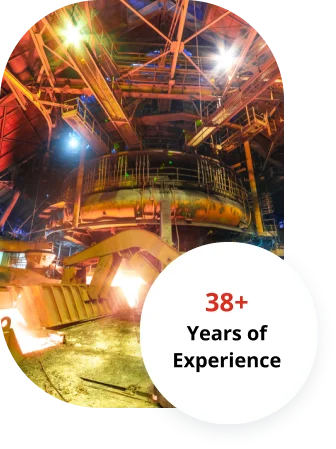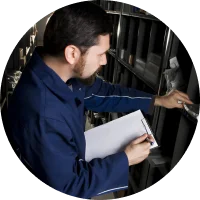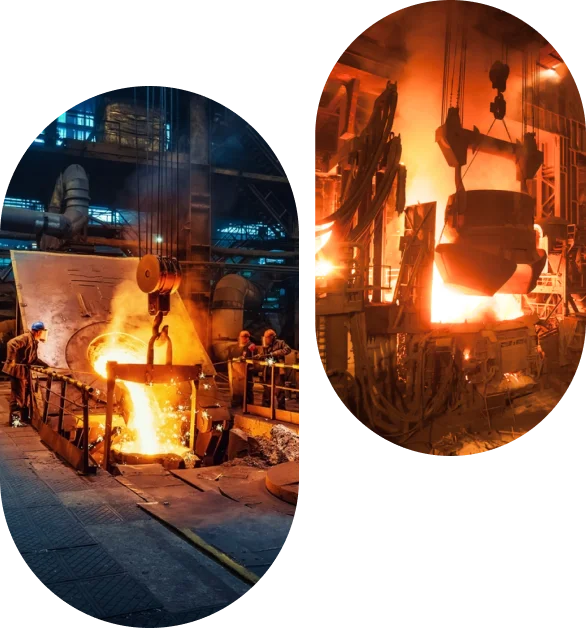

The blast furnace industry heavily relies on bulk raw materials like iron ore, coke, and limestone. With high capital investment, continuous operation, and complex input-output cycles, managing production and resource efficiency becomes a significant challenge. Pig iron, the main output of blast furnaces, serves as a raw material for cast iron and is further refined into various steel grades.
ERP Software for blast furnace offers a purpose-built solution tailored specifically for the operational and logistical complexities of blast furnace operations. Designed to support high-volume, continuous manufacturing environments, Lighthouse ERP for steel delivers end-to-end visibility from raw material intake to furnace output and finished product dispatch. Since 1987, Lighthouse has continuously refined its ERP platform to meet the evolving demands of the steel sector, with a strong focus on industry-specific workflows, process control, and real-time costing.


Handling iron ore, coke, sinter, and limestone across multiple points without a centralized tracking mechanism leads to frequent stock mismatches, pilferage, and inefficient material flow.

Raw material stock fluctuates rapidly at high-consumption zones like the feeder and discharge areas. Manual tracking makes it difficult to maintain accurate real-time stock positions, affecting furnace feed consistency.

Blast furnaces operate continuously in 8/12-hour shifts and capturing exact shift-wise production with parameters like tapping time, yield, and furnace load is often missed without automated systems.

Quality checks at multiple points sources, third-party inspection, inward QC, and yard QC are not interlinked. This makes it hard to validate material specs, resulting in poor heat chemistry and off-grade outputs.

Intermediate materials like hot metal, slag, and sinter need batch-wise costing. Without a pricing mechanism for WIP and semi-finished stock, production cost tracking is flawed.

Electricity and utility consumption are not recorded against specific batches or lots, making it difficult to calculate energy efficiency and operational cost per MT.

Raw material from multiple sources mixes during charging, and without digital traceability, it becomes difficult to map raw-to-finished good lineage essential for grade-wise compliance and audit trails.

Tracking at each node Gate, Weighbridge, Quality Lab, StockYard, Crusher, Feeder, and Bagging Station is possible with ERP Software for steel. This also ensures visibility of every inward/outward material movement with vehicle, batch, and gate entry linkages.
The system updates stock status live at raw material yard, crusher feed, intermediate hoppers, and discharge zones. Material management ERP module controls min/max levels and sends alerts for replenishment or overstocking.
Operators can record production shift-wise with parameters like tapping temperature, hot metal yield, slag ratio, and lot number. The system maps every shift's output to batch codes and godown location, enabling granular reporting.
Lighthouse ERP connects all QC touchpoints source QC, third-party labs, inward QC, and yard testing and links test results to vendor bills and material acceptance. This reduces disputes and ensures input quality compliance.
The ERP software supports batch-wise pricing for semi-finished products like hot metal, sinter, slag, etc., and carries forward those values in the finished goods costing making yield variance and process cost analysis accurate.
Furnace-wise power consumption is auto-recorded and linked to production output. This helps management track energy cost per ton of hot metal and take corrective actions for high-consuming furnaces.
With Steel manufacturing ERP every raw material entry is batch-tagged and linked through the production cycle from hopper charging to hot metal casting. This provides complete traceability, helping with grade-wise performance analysis and statutory reporting.
Sales contracts, orders, and dispatches are auto linked to production lots and QC data. ERP allows dispatch planning based on advance receipts, product grade, size, and customer-specific contracts reducing manual dependencies.
Supports complex scenarios like rake inward, inter-yard transfers, sales/purchase returns, scrap movements, and stores consumption across the integrated steel plant.
Enables deep analysis of stock positions across multiple levels for strategic decision-making and inventory audits.
Facilitates effective production planning through Bill of Materials and Material Requirement Planning for each finished item.
Records and monitors essential furnace parameters like temperature and pressure for maintaining process consistency.
Tracks variances between expected and actual output to enable corrective action and improve production efficiency.
Quality parameters are linked directly to purchase bills, ensuring that material acceptance is tied to actual specifications and reducing disputes.
Manages separate books for different divisions and auto-handles inter-division sales and purchases in real-time.
Captures expenditure related to external contractors or job work processes with integrated approval and audit trail mechanisms.
Manages sales through a structured flow: Sales Contract → Sales Order → Delivery Order, with complete traceability.
Supports varied pricing methods including cash discounts, volume-based pricing, fixed-period contracts, and credit control.